Bee Habitat for Pollinators- what's going on?
Related Discussions
Blackout curtains behind vertical blinds
I have two 6' patio doors, and I want to add blackout curtains to keep the sun/cold out. What is the best way to hang them, and what can I use to push the curtains ba... See more
How to make a balloon garland?
Does anyone know how to make a balloon garland or a balloon arch?
Ideas for this 3 ft stump in my front yard
My tree was knocked over by a storm and this is what we are left. I have no way of cutting it down any further and to me it's just an eyesore. My uncle set a couple o... See more
How do u make hummingbird mix for the feeder
Can u help me make food for my hummingbird feeder
What to Do With All of Our Crystal, Depression & Carnival Glass??
Well, we make Lawn Art, totem poles... We're currently making mushrooms & flowers and totems on poles....
Hostas under a willow tree--Yay or Nay?
Our very large willow tree (Bubba) is beautiful but I want to add more visual interest by planting several varieties of Hostas around the base of her, in particular, ... See more
The bane of my gardens existence!
I dont know what these are but they get harder to handle every year. I only use preening and pulling as a weed barrier but these are coming in more and more every yea... See more
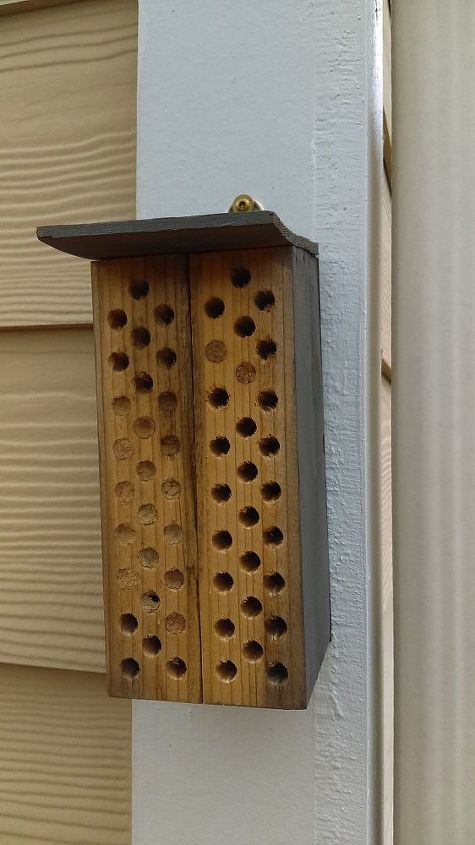
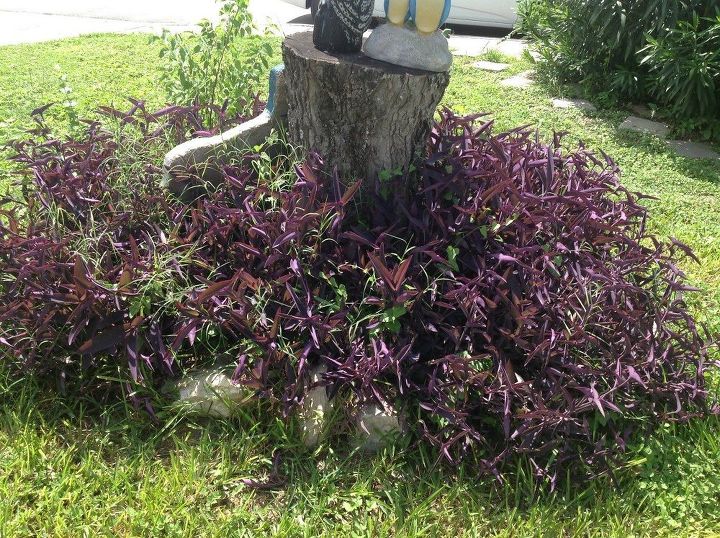
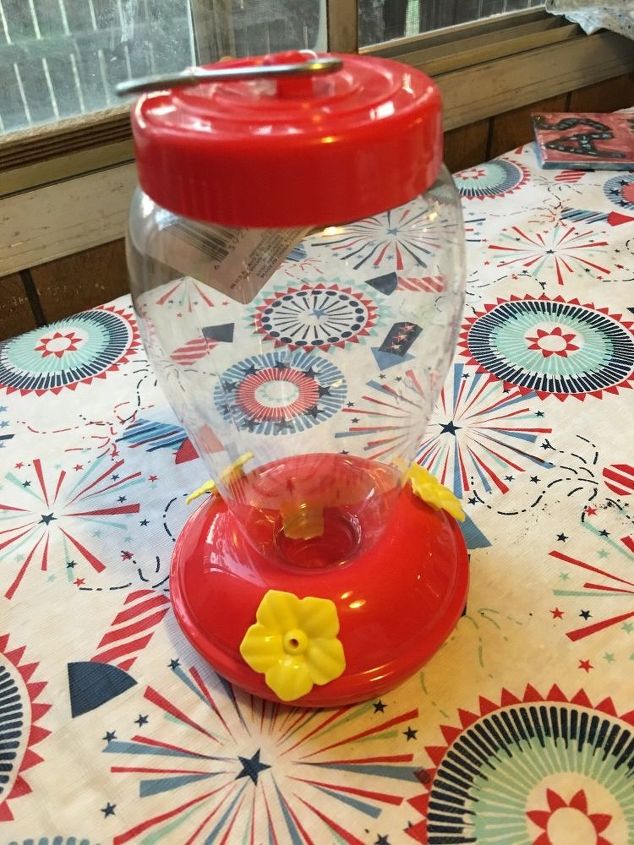

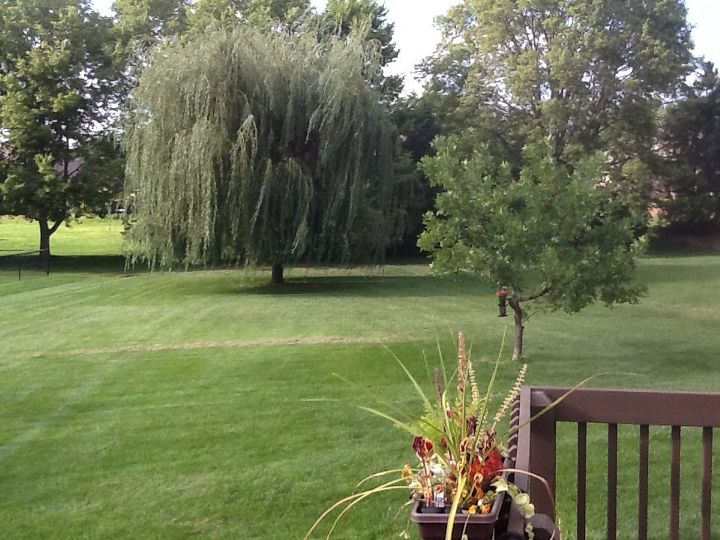
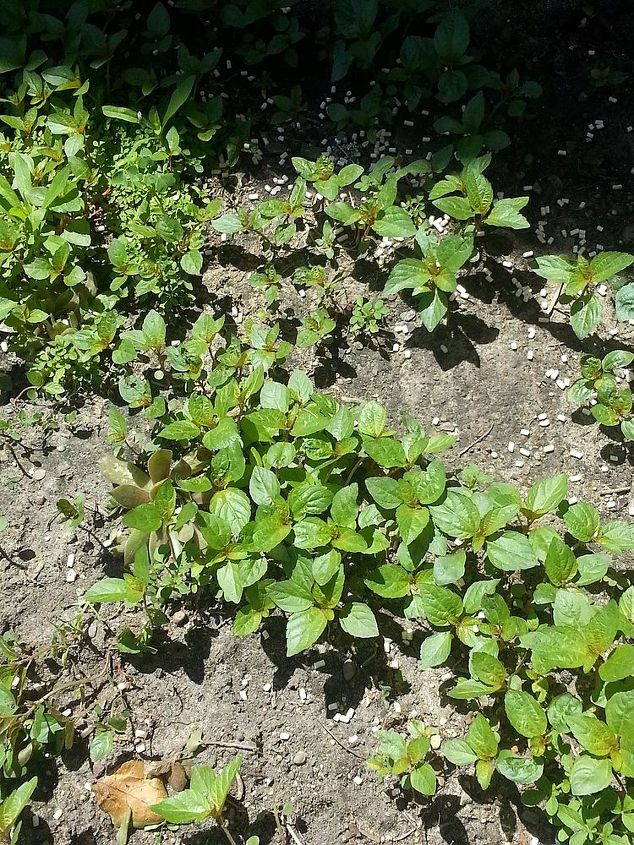

If you used treated lumber to build the bee house, it's likely those preservation chemicals prevented hatching.
could be dirt coppers instead of bees filling your spaces. I might try to build one. How big and deep are the holes?
as a person who gives Mason bee presentations, this house design is not recommended although it is cheap and easy to make. Use a 3" PCV pipe and make a house 7" long (glue/caulk in a test cap to one end). then roll up 6" x4" paper grocery bags pieces around a 5/16" wooden dowel, glueing the flap and one end shut. remove the stick and make about 22 6" long paper tubes to fill the PVC pipe. Then in the fall you can open the paper tubes and find the cocoons where the Mason Bee larvae are changing to overwinter as adults. With your wood block and no paper tubes, you cannot open it to see what happened (disease, parasites, other) or find out who nested inside. Lots of Mason bee websites online with directions.
Mason bees are our native bees in the US-there are over 4,000 native bees in North America. Mason bee do the pollinating of our fruit trees - they live from mid March to end of May-about 8 weeks. Most bees live only 8 weeks except the Queen honey bees, and her fall hive--and those cute bumble bees who have a hive of less than 50 babies in old mouse holes. If you want the details, on Mason bees that look like skinny small black flies, go to 'Crown Bees' and click on learn. this company advertises that they keep cocoons organized by area-I'm in Michigan and don't want bees from California with a different plant preferance. they are more expensive that some other companies-but a great place for accurate info.
If you want to continue to use the wood block, drill the holes larger for paper tubes with a 5/16" opening, then you can remove the tubes in the fall and open them up and look for spun cocoons. I'm sure there are other sites you can get great info from too other than Crown Bees but some sites have misinformation--like making the paper tubes out of parchment paper-this paper curls tighter in the weather and the bees can't use it.
Leaf cutter bees that are out buzzing around now are smaller and like small diameter tubes.
I'm glad you are interested. Honey bee keeping is a part time job and expensive to get started-besides what am I going to do with gallons of honey each year. Selling it at a farmer's market would be another job for this old lady (Chris)-no thanks.
By the way, I've (Chris) have been a Master gardener since 1979 and continue to take classes to be up to date with the most accurate information. Through National Garden Clubs I have also received certification in Gardening Study, Environmental and Landscape design. But everyone has their own slant on gardening as new ideas and science change our old way of doing things all the time.
I have friends up near Buffalo, NY and they took up beekeeping several years ago. They have the full white gowns & "helmets" to wear....they said everyone gets honey for Christmas!! Not a bad idea, actually. At a farmer's market yesterday, I bought a large jar of bee pollen and a 32 oz. jar of raw honey and the cost was $52!! Guess it is worth it if it helps the granddaughter's allergies and more. Will give it a try! Thanks for all of your info!
See if you don't find this useful:
http://www.grit.com/animals/bees/diy-mason-bee-house-zb0z1601
One last comment about Mason bees: They are one of the earliest pollinators in the spring. All of our beneficials deserve whatever help we can give them. Thank you Brucelapinski for all your information!
Well never take ones words too lightly, I would suggest the traditional methods have been around for decades for a reason. With that being said, I would look at the size of the wholes, and the overall environment https://www.hindawi.com/journals/psyche/2012/302409/